Spiritual and Pilgrimage Tour to Central Tibet

Trip Facts:
Tour Name : Spiritual and Pilgrimage Tour to Power Places of Central Tibet
Entry / Exit : Fly in / overland drive out exit to Nepal
Grade : Spiritually overwhelming
Max Elevation : 5045m/16548ft
Accommodation : Hotel/Basic Guest house
Meal : MAP
Transport : Flight & Private vehicle
Total Days : 19
Trip summary:
This customized tour designed especially for those wish to experience and willing to cross the boundary of comfort traveling far away from materialistic world to immerse completely in nature to prepare for meditational mode. You will receive life time opportunity to visit the most sacred power places in highland of Tibet, caves, pristine Lakes, Temples, and Monasteries, hills where great ancient masters spent their time and received wisdom.
SERVICES INCLUDED:
Twin sharing accommodation as per the itinerary on bed & breakfast (BB) basis.
English speaking Tibetan Guide (EX Monk).
Transportation as per the itinerary by necessary vehicle.
Monastery entrance fee.
Tibet Travel permits.
Emergency mineral water in the vehicle.
Emergency portable oxygen cylinder in the vehicle.
Trip briefing by Tibet expert & entertain question.
Trip Information packs
Gift pack (prayer flag or string of flag & paper prayer Lungtha).
Note: Offer Prayer flag or Lungtha (string of prayer flag) in high passes, temple for good fortune & long life.
SERVICES EXCLUDED:
Tibet Visa Fee (Acceptable in US$ cash only).
Airfare: Kathmandu – Lhasa (Fare as per availability).
Any arrangements in Nepal.
Travel insurance.
Expenses during any rescue operation.
Nepal re-entry visa fee.
Lunch and Dinner
Alcoholic beverages & bar bills.
All expenses of personal nature, phone calls, laundry etc.
Gratuity to staff.
Services of Porter age and other vehicles in between in case of landslides and other natural calamities beyond our control and expenses incurred during rescue services.
Additional portable oxygen cylinder
Services not mentioned herein.
Itinerary
Day 01: Fly to Gongkar Airport & drive to Lhasa (3600m/11811ft), 65km, 1hr:
Fly to Lhasa takes approx 50 minutes enjoying breath taking view of Mt. Everest and other highest mountain peaks obovve 8000m, this is the only airline flying over passing through the Himalayan ranges above the Mt. Everest into Tibet. You will be met at Gongkar Airport by your Tibetan guide. After immigration formalities take an hour drive to Lhasa. Your first day it is best to take rest and try to acclimatize. O/N Hotel (BB).
Day 02: Visit Jokhang Temple and Sera Monastery:
Early morning visit Jokhang a seventh-century geomantic temple at the heart of Lhasa is the most sacred temple of all Tibet. It is considered to be a Power Place in all Tibet. Queen Bhrikuti, a Nepalese princess married to King Songtsen Gampo founded Jokhang Temple and in recognition of Queen Bhrikuti the main gate of the temple faces west towards Nepal. The most important sacred shrine of Tibet is in Jokhang Temple, the statue of Gautama Boudhna (Jowo Rimpoche) statue was crafted when Boudha was just 12 years old, it was gifted to Indian King of Magadha and later it was again gifted to the emperor of Chinese King who gave the statue to Tibetan King Songten Gombhu when he married of Chinese princes. Tour Guide will organize blessing ceremony in one of the chapel in Jokhang Temple.
Barkhor Market (Bazaar): The most popular Barkhor Market (Bazaar) is a square which used to be the main center in ancient time now a busy shopping area and tourist attraction. There are hundreds of Tibetan houses, local market and touristic market of Tibetan handicraft items, Buddhist artifacts, carpets, paintings etc.
After Lunch we visit Sera Monastery, this monastery is approx. 5km drive away from Lhasa. Sera Monastery was founded in 1419. It sits in the prettiest and most charming atmosphere at the base of Mount Purbuchok. Sera Monastery used to be an important center for learning where in the past approx. 5,000 to 6,000 monks resided. Currently about 550 monks are supposed to be living there. The important structures inside the monastery include Coqen Hall, (the main assembly hall), three Zhacangs (Buddhist colleges) and twenty-nine Khangtsens (monk dormitories).The most intriguing feature here is the nine-meter image of Maitraya which was erected in 1419; here one can also witness the practicing of debate among the monks, who pitch their knowledge against each other.
Day 03: Visit Drakyerpa Hill(4800m/15744ft, 40km/1/2 hr):
Located 40 km northeast from Lhasa, Drak Yerpa is said to be the “life tree”, or spiritual axis, of Lhasa itself. With more than eighty meditation caves, it was a village of several hundred hermits, monks, and nuns who lived on a site blessed by Songsten Gampo, Padmasambhawa, Yeshe Tsogyel, Padampa Sanggye and Atisha. Since the seventh century it has been considered one of the most sacred sites in Central Tibet. You can spend time in one of the cave as per the local condition for meditation. Later return to Lhasa. O/N Hotel (BB)
Day 04: Visit Potala Palace and Visit Tibetan village (3600m/11811ft):
We you will be escorted by your guide to the majestic Potala Palace, the “winter palace”. The imposing structure of the palace dominates the landscape of Lhasa. is a 13th storied complex monument rising to a height of above 117m which houses 10,000 shrines and over 200,000 images and about 1000 rooms.As you are guided through the ancient chambers of the palace, you get to see Tibetan art at its best. The Potala Palace has a vast array of intricate Tibetan murals and beautiful statues. You will also get to view the tombs of the eight Dalai Lamas.
Afternoon drive to Sal Village located approx. northeast of Lhasa, visit Tibetan village, you will spend time with Tibetan farmer family and interact with family, visit holy Mountain of local village and cave of Padmasambhawa. Enjoy lunch cook by family. Return to Lhasa.
Day 05 - 07: Drive to Namtso Lake, 4718m/15442ft, 230km, 3 hours:
Early morning drive to Namtso Lake Namtso Lak. On the 49 km descent from Lhachen La Pass, there are spectacular views of the tidal Namtso Lake, which is 70km long and 30 km wide is the second largest salt water lake in the Tibetan Plateau after Kokonor. The average altitude is 4,700m, and the landscape is dominated by the snow peak of Nyencheb Tanglha to the southwest. There several caves where great master Padmasambha once believed to have meditated to gain wisdom, there is temple of Tashi Do. Namtso Lake considered source of energy and you may want to meditate by the Lakeside in solitude. There are simple basic Guest house, Government have organized toilet in mobile trailer and it is not allowed to built any permanent structure to keep the Lake in its natural condition and to prevent pollution. O/N Guest House.
Day 08: Drive to Reting, 165km/3 hrs:
Visit Retin Monastery belongs to Geluk tradition and this is the seat of Reting Rimpoches who played important role in searching for the 14th Dalai Lama. Monastery was built by main disciple Drom Tonpa of great teacher Atisa back in 1056; Reging Monastery is 150 km north of Lhasa and apprx. 40km from Namtso Lake south east. Reting Monastery was built by Drom Tönpa decipal of great master Atisha in 1057. There is believed to be important Terma (ancient script). Opportunity to meet resident monks and meditate. O/N Hotel (BB).
Day 09 - 10: Drive to Tridum Nunnery and Drigun TIl, 4700m/15416ft, 65 km / 1.5hr:
Located up in the sacred hill of Tridrum also famously known as Zhoto Tidro Hermitage. There is an important nunnery and simple guest houses for the pilgrimage. Story says, Trisong Detsen spent time with his consort Yeshi Tsogyel to protect them against the hostile protest by Bonpo, both Padmasambhawa and his consort spent meditating at Tidro for many years. It is said Padmasambhawa hide many previous terms in the cave of Tidro. For those who is physically fit can trek above Tidro to meditate in Padmasambhawa caves. You may like to enjoy bath in meditational hot spring, it’s believed that hot spring was created by Padmasambhawa. You will probably be staying in guest houses below Tidrum and visit Drigun Til nunnery built in the slop of ridge, DrigunTill Nunnery is consist different separates 50 building. Nunnery is belong Ngnma tradition of Tibetan Buddhism. O/N Guest House (BB).
Day 12: Drive to Samye, (3510 /11512ft 200km, 3 hours:
You will drive south of Lhasa along the Kyichu River and later Yarlung Tsangpu toward east of Lhasa, reach Samy valley. Visit Samyling Monastery, first Monastery with the help of Padmasambhawa and King Trison Detsen. Visit Hipory Hill small shrine temple where Padmasambhawa perform famous ritual and subdue the demon disturbing King from building the Monastery, demon eventually became decipal of Padmasambhawa who converted protecter God of the valley. Visit Chimpu Nunnery located up in the hill above the Samye Monastery required uphill climb vehicle can reach to some point and need to walk to reach the Hermitage; Nunnery takes months and years of retreat. You may like to spend some quiet time meditating, many great master have meditated in this hermitage and preached their decipal. O/N Hotel (BB).
Day 13: Visit Yumbhulhakang and Tandruk Monastery
Tradruk Monastery: meaning eagle and dragon in Tibetan, also known as the Changzhug Monastery is the largest and most important of the surviving royal foundations in the Yarlung Valley. Tradruk is said to have been the second of Tibet's earliest great geomantic temples after the Jokhang. It is believed that famous eminent Buddhists have been cultivated them around Trandruk Monastery, including Masters Padmasambhawa and Melarapa. This existence of relics is the major sights for the pilgrims. There is a famous bronze bell which is widely known in all through Tibet in Trandruk Monastery. The antique precious potteries and relics are still stored here.
Yumbu Lakhang: Meaning 'the palace on the leg of a female deer', located on the east bank of the Yarlong River southeast of Tsedang Town. Yumbu Lakhang, the castle perched dramatically on a pinnacle above the valley, is the oldest known dwelling in Tibet, reputedly the home of the Yarlong Kings. The view from the castle is awesome. O/N at Hotel in Tsedang (BB).
Day 14: Drive to Gyantse via Yamdrok Tso (3950m /12956ft) 310km/ 6 hrs:
Moving along the Friendship Highway, you drive past Khamba La, at 4970 meter with a brief halt to savor majestic views of Yamdrok-Tso Lake and Mt. Nojin Kangsang, standing at 7191m. On turning westwards, you come across another pass, Karo La at 5045m. After driving 265 km, beautifully landscaped Tibetan villages become visible as you enter the town of Gyantse, an old Tibetan Town against a backdrop of magnificent 14th-15th century fortresses and temples. Here we will visit the Khumbum Monastery and Pelkhor Chode Temple. O/N at Hotel in Gyantse (BB)
Khumbum monastery: is a large gold-domed Stupa and its many small chapels house an impressive array of Tibetan Buddhist murals. It is an architectural masterpiece built in the style of 108-sided Mandela. It is the most revered Stupa in Tibet and houses 112 chapels of which only 23 are open to the public.
Pelkhor Chode Temple: which is a fort dating from the 14th century. From there you can enjoy the spectacular views of Gyantse and the surrounding Nyang Chu Valley.
Day 15: Drive to Shigatse. Visit Shalu en-route (3,900m/12795ft) 90km, 2hrs .
After exploring Gyantse, you will take a 90 km drive to Shigatse. Having driven to an average altitude of 3900 m, you find yourself at Shigatse, second largest city of Tibet. Tashilumpho Monastery being one of the largest functioning monasteries in Tibet is a major attraction of Shigatse. Enrotue to Shigatse we visit the Shalu monastery.
Shalu Monastery: 'Shalu' means 'new bud' in Tibetan Language. Shalu Monastery, situated 20 kilometers (12 miles) southeast of Shigatse, is a perfect combination of Han and Tibet architectural styles. In 1320, it was administered by Master Purdain Renqen Zhuba, a renowned religious scholar who compiled the Tenjur sutra, one of the classic woks of Tibetan Budhism. It is said that about 3,800 monks were drawn to his teaching. Therefore, the monastery became a holy site for many worshipers. Since many Chinese artisans were assigned to reconstruction work, it integrated both Han and Tibetan architectural styles.
An interesting anecdote lies behind this interesting name. A monk named Jigzun Xerab Qoinnyai wanted to build a monastery to spread doctrines of Tibetan Buddhism. He consulted his teacher about the construction site. His teachers suggested a site where a shooting arrow fell. The arrow fell in a new bud, hence the name.
Shigatse the capital of Tsang Province was one of the first towns to be visited by westerners due to close distance with the Indian border. Here in Shigatse you will be visiting Tashilumpho Monastery. This monastery is one of the largest functioning monasteries in Tibet and there is much to explore within its high surrounding walls. There are about 39 amazing chapels inside including the huge Maitreya Chapel coated with gold; its workmanship certainly impresses everyone.After detailed visit of Shigatse, we will visit the local markets for shopping and local sightseeing. O/N at Hotel in Shigatse (BB)
Day 16: Drive to Shegar. Visit Sakya en-route (4200m /13776ft) 300 km, 5hrs:
Today you will traverse along the Friendship Highway amidst picturesque landscape driving past small town of Lhatse and Gyantso La pass at 5220m. As the route opens into plains, many monasteries and camps of nomadic herders become visible en route to Shegar. En-route you will Visit Sakya Monastery which is a “must-see” for all the visitors to Tibet. It is the central monastery of Sakyapa sect of Tibetan Buddhism. Its walls were painted in red, white and grey strips, which represent Manjushree, Avalokiteshvara and Vajrapani respectively. O/N at Hotel in Shegar (BB).
Day 17: Drive to Rongbuk Monastery & Everest Base Camp, 5200m/17060ft & drive back to Old Tingri, 4300m/14108ft, 260km 5hours:
Drive off the main friendship highway enter Everest conservation area and begin drive through open valley, remote villages, opportunity to see wildlife such as Tibetan antilope, Eagle, Wild Ass and more, you drive assending and Mt. Everest will be visible from distance until you reach Rongbuk Monastery located at the altitude of 4900m. Founded by Ngima monk Nawang Tenzing Norbu in 1905, there are several huts and caves for meditational purposes. Monastery was totally destroyed during the cultural revolution but rebuilt again, there is sky burial site nearby the Monastery not in used currently but you can see ruins. Monastery provide accommodation to the travellers but its basic. Later Drive back to Old Tingri for overnight stay. O/N at Hotel in Old Tingri (BB)
Day 18: Drive to Kyirong (2700m/8856ft) 240km, 4hrs:
This morning you will drive along the friendship highway via Gutsu, Reached Kyirong Dzonkha which is the district head quarter of Kyirong. You will pass through high pass of Yandola at 5326m/17469ft. You will descend driving through alpine vegetation called locally happy valley and reach Kyirong a lush forest very different from dry barren Tibetan plateau Time permits, you can visit temple dedicated to great enlighten Yogi of this area famousely called Melarapa. O/N at Hotel in Kyirong (BB).
Day 19: Drive to Kathmandu (1300m/4265ft) 170km, 10hrs:
After breakfast, you will drive approx one hour to Chinese immigration and after immigration formalities and last good bye to your Tibetan crew. You cross into Nepal where you will be meeting by representative of Basanta Adventure. After Nepal immigration formalities, you will continue to drive to Kathmandu through the Langtang National Park. You will stop en-route for lunch. Drive is beautiful but some section will be quite rough until you reach main Tribhuwan highway. You will reach Kathmandu late evening.
NOTE: The above program is subject to change as per local authority and valid only for less than 4 persons.

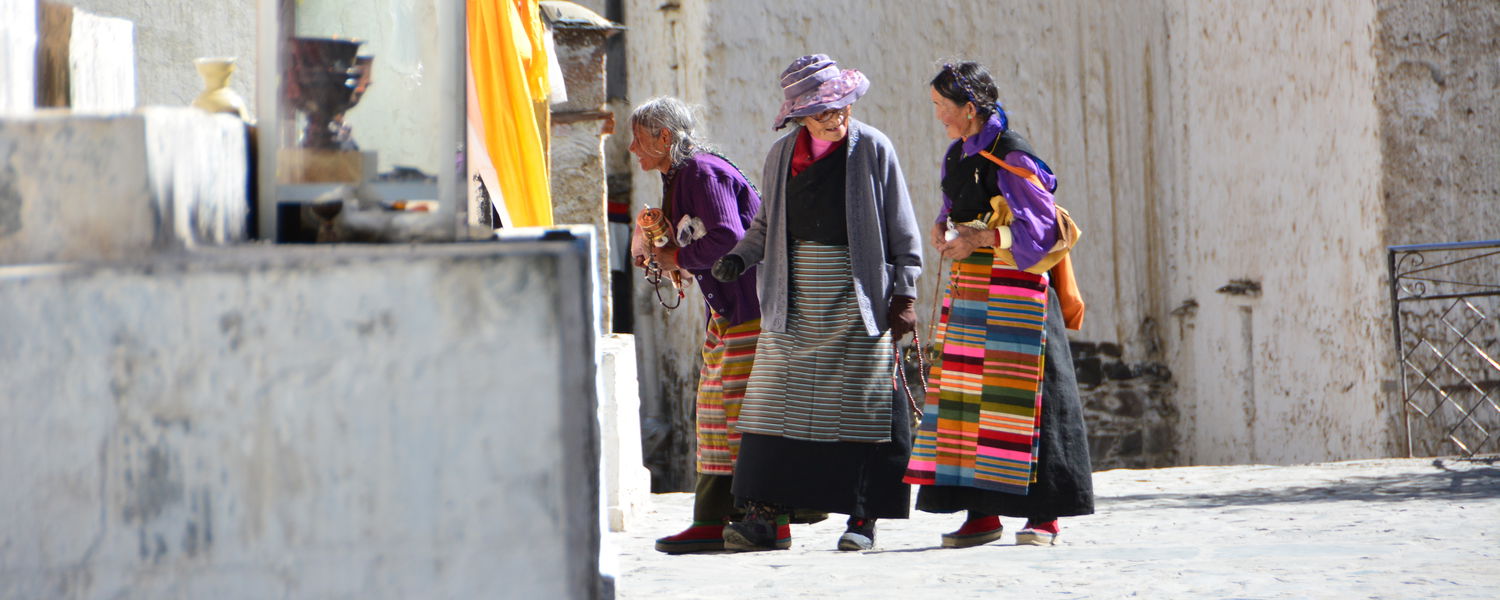
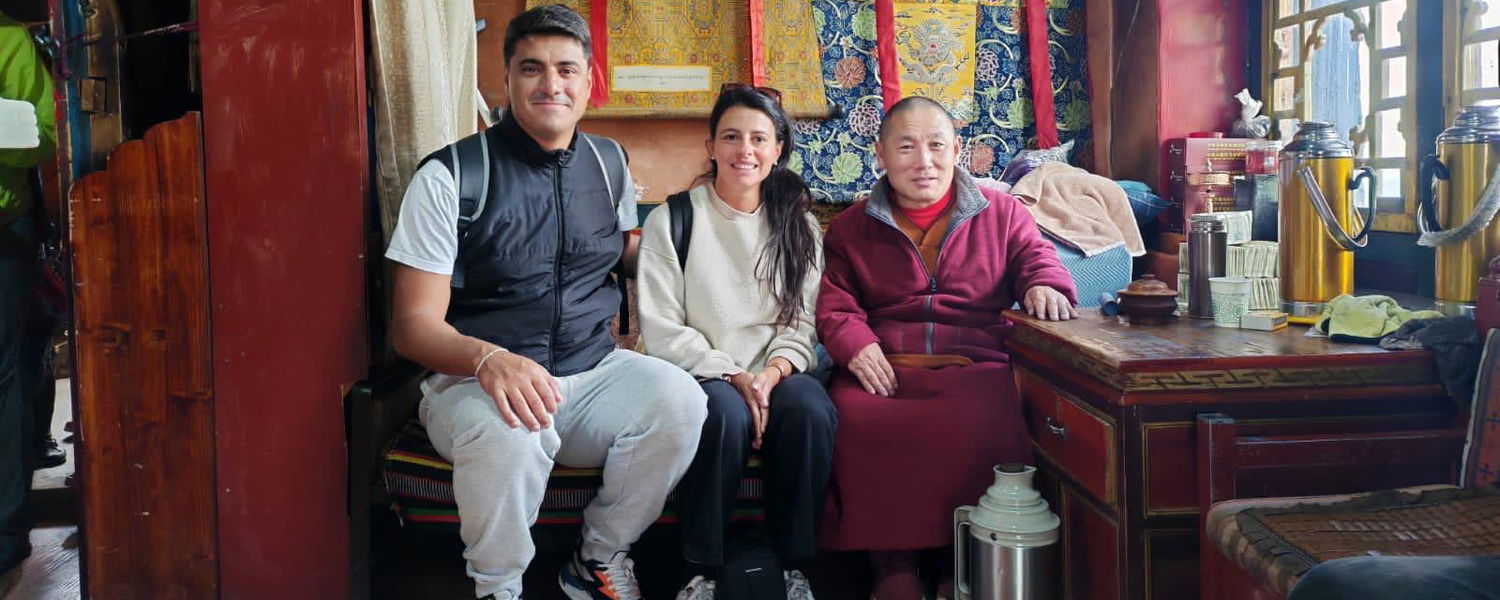
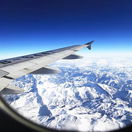
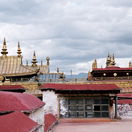
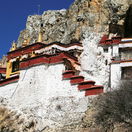
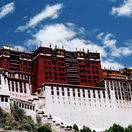
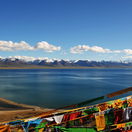
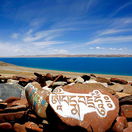
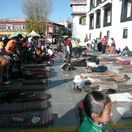
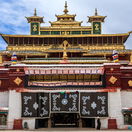
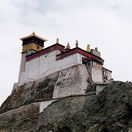
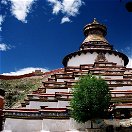
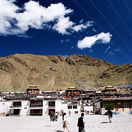
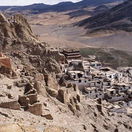
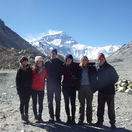
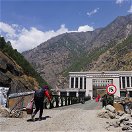

Share This Page